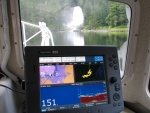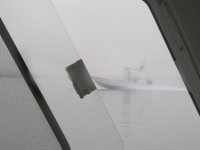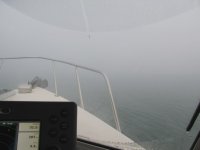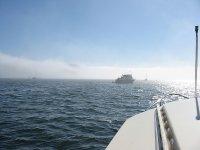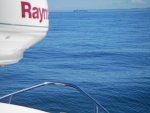Adeline
New member
- Joined
- Nov 3, 2003
- Messages
- 985
- Reaction score
- 0
- C Dory Year
- 1989
- C Dory Model
- 22 Cruiser
- Hull Identification Number
- DOR2242OF989
- Vessel Name
- Adeline
In the 22 years I've had Adeline I've really needed radar perhaps 5 times total.
3 of those times have been at the Columbia River Mouth.
Once in the San Juans.
Once between Port Orchard & Bremerton.
In 4 of these instances I was able to fall in behind a boat that DID have radar.
The 1 time I couldn't was off Peacock Spit, North of the Columbia River Mouth. I was all alone in the soup.
Fortunately, I was out of the shipping channel so I hovered 'til the fog lifted.
In each of these instances I put MYSELF in jeopardy because of impatience...I grew weary of waiting for the weather to clear so I forced the issue. Leaving a safe moorage in search of fish.
Now older and wiser, I'm happy to wait until conditions are safe. I've got the time and I'm in no hurry.
In my opinion, if a skipper MUST push the weather, or ranges far from port, or simply can't tolerate sitting in port waiting for the weather to clear, radar is a viable option.
Otherwise, it's one more electronic gadget to master and supervise.
3 of those times have been at the Columbia River Mouth.
Once in the San Juans.
Once between Port Orchard & Bremerton.
In 4 of these instances I was able to fall in behind a boat that DID have radar.
The 1 time I couldn't was off Peacock Spit, North of the Columbia River Mouth. I was all alone in the soup.
Fortunately, I was out of the shipping channel so I hovered 'til the fog lifted.
In each of these instances I put MYSELF in jeopardy because of impatience...I grew weary of waiting for the weather to clear so I forced the issue. Leaving a safe moorage in search of fish.
Now older and wiser, I'm happy to wait until conditions are safe. I've got the time and I'm in no hurry.
In my opinion, if a skipper MUST push the weather, or ranges far from port, or simply can't tolerate sitting in port waiting for the weather to clear, radar is a viable option.
Otherwise, it's one more electronic gadget to master and supervise.

